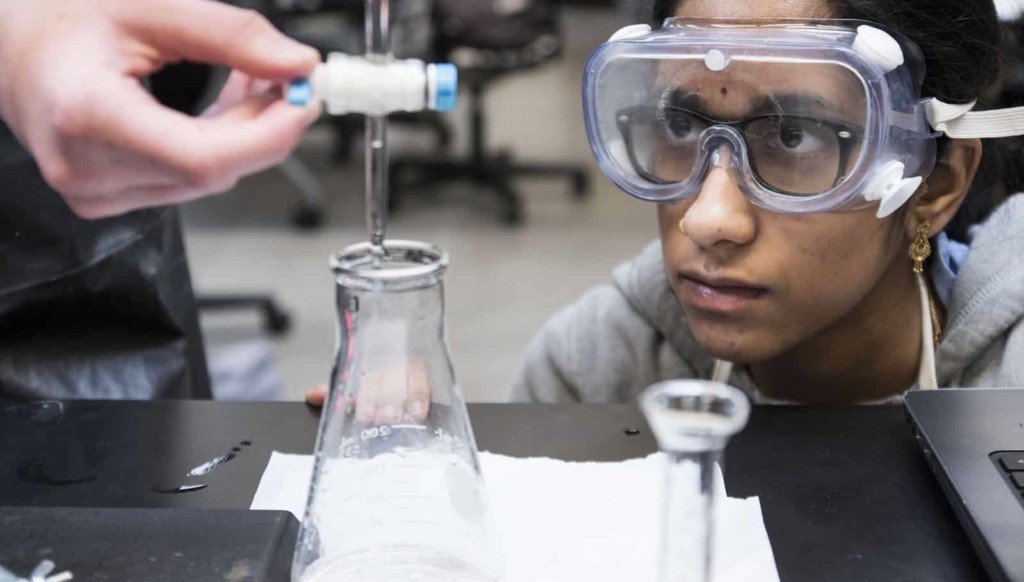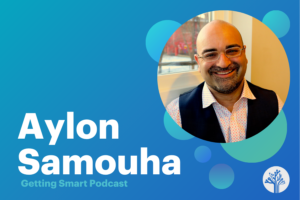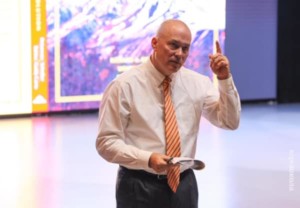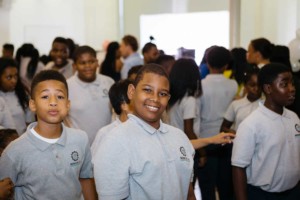The Only Constant is Change: Adjusting Our Practices to Meet the World’s Expectations

Change has a habit of starting out small. It’s usually a small piece of a large system that changes first. With time, that change results in a chain reaction that starts to evolve other parts of the system and soon we have a revolution. Our students are currently living through a revolution. Technology is advancing quickly and new discoveries are made almost daily. This revolution is bringing about change to each sector of our society and economy, including education. You’ve most likely felt these changes. Our students have the ability to learn in so many different ways, personal to them because the powerful minds of the world have created technology that facilitates that. It’s an exciting time. The challenge for educators is to prepare our students for this rapid pace of change, which by all accounts, may never slow down. The “Ask about AI: The Future of Work and Learning” report recently released by Getting Smart advised, “Millions of jobs are at short- or medium-term risk of disappearing. Many that don’t disappear will be so radically restructured as to be unrecognizable, with enormous implications for today’s workers.” That leaves educators wondering how they can make their own changes to help their students keep up with new technology and a different economy.
As previously stated, changes that spark a revolution are often small. Those changes often shake the foundation a little and other things we’ve been doing: classroom activities, tech integration and district policies, stop making sense. This leads to more positive changes which better prepares all of us for the future. I’d like to share with you a few small changes your school can make in order to better prepare students for the future of work and the rapid, and sometimes alarming, changes that come with it.
Collaboration

“Most professions exceed the capabilities of any individual, and require cross-functional teams to deliver properly.” Let’s translate this to education. Kids need to work in groups. Notice I didn’t say “do group work.” Group work suggests that students occasionally get together, work as a group and then disband. Working in groups implies that anytime work needs to happen and something needs to get done, kids are collaborating together. This mimics the teams that work together in the modern economy to deliver new products, new ideas, or new technologies. Working in groups only makes sense if the task ahead really does require collaboration, something that one person can’t do on their own. Working in groups also means members should be accountable to each other and honor the collaboration by bringing their “A” game all the time.
To help our students work in groups, our school has implemented a few protocols and structures to help facilitate stellar collaboration. One such structure is the use of contracts.
- Contracts: Contracts are a chance for our students to decide on a myriad of things. They decide how each member will contribute to the project, skill wise. They decide how work time will go, how they’ll organize the project, what will happen if expectations aren’t met (yes, they can be fired from a group if they fail to meet contract requirements) and how they’ll help each other reach goals. Meeting goals in a group is a vital part of collaboration. Each student should have something they want to learn and improve on when they get together with their groups. In our contracts, each student states a collaboration goal they have and the team then commits to certain actions that will help that student reach their goal. For example, if a student wants to be better at coming prepared to class each day and being ready to work with their group, the team might put that student in charge of deadlines and require that they send out reminders. Then if the student doesn’t, it’s rather easy for someone to say, “Hey, I’m not getting deadline reminders from you.” They have a way to hold that student accountable and by doing so, that students move closer to their collaboration goal.
Advisory
“The abilities to read social situations and develop productive relationships are, for the foreseeable future, uniquely human skills, and will become increasingly important and valuable in an automation economy.” Commonly called “soft skills,” the abilities that make up Social and Emotional Learning are hard to teach when you’re short on time and trying to reach state standards. However, the ability to grow emotionally and socially, coupled with the ability to navigate a complex, adult world, are important for our students to learn and a strong advisory system in your school will get them there.
- Every child, every day: Each teacher at our school becomes an advisor to a pack of 15 to 20 kids. We follow these kids from the moment they enter our building as a freshman until they walk across the graduation stage as seniors. We act as mentors and guides and work to help them develop SEL skills, prepare for college and career, and tackle the everyday challenges of high school life. From my own experience as an advisor, a teacher can really get to know a student who they are constantly advocating for. One student of mine felt bogged down with negativity. She knew her attitude toward assignments and school, in general, was going to jeopardize things she wanted to work for. She came to that realization after a workshop about positivity and productivity. Since my job as her advisor is to connect her to resources that help her grow not only academically, but also emotionally and personally, I created a positivity challenge. We had to find each other throughout the day and give each other a sticky note with a positive event that happened or how we turned something negative into something positive. Our goal was five stickies a day. After our first week and 25 sticky notes later, I asked how she felt. “This is actually working, Mrs. Durfee! I feel better.” A strong advisory can help us serve our kids in a way that is more precise and meaningful.
- Workshops: Each week, we hold a workshop day. On that day, students could find workshops on a variety of things from how to do your taxes, or fill out FAFSA forms to bread making and changing a tire. These are workshops that students have requested and as a school, we make those workshops happen. Workshops are run by teachers, students or community members. Tailoring a day each week to delve into our students’ interests and passions helps to build a team atmosphere and it encourages the idea that learning, no matter the content, is important.
Questioning Our Model
“Most work is now conducted in projects. More than four in ten high-school graduates work in the freelance economy and probably as many who go to work for others end up working on or leading project teams.” What this might mean is the silo model of education, where you go to English class and then to math class, is not going to serve our students well outside of school. This also might mean that, as educators, we need to look for other ways to simulate how the real world works and make that the norm of our school.
Project-Based Learning: This model of learning, adopted in hundreds of school across the globe, is based on the premise of design-thinking. Design thinking uses a specific process to tackle problems and find innovative solutions. Students are presented with a high-order question and use design thinking in an effort to answer it. “Why don’t people seek help for a mental illness?” In order to answer that question, students would first have to investigate low-level content knowledge like, “What is mental illness?” “What are the symptoms of a mental illness?” “What are the causes of a mental illness?” They’ll work through those low-level questions and start working on applying their knowledge until they can answer that first high-level question and do something about the problem. Project-Based Learning can start in one classroom with one project. The changes it will bring to your instruction will start out small, but soon it will impact everything you do as an educator. These changes will influence your students’ thinking ability and as they practice design-thinking with each project, they will become more and more prepared for the rapidly changing landscape of the future economy.
Changing everything about what we do each day is too overwhelming. Rather, it’s best to make smaller changes that coincide with a larger, long-term goal, such as preparing our kids for the future of work. If we can make some of those smaller changes to match the changes we’re seeing in our communities and our world, we start on the road toward more prepared students who can thrive in an economy where the nature of the work they’ll be doing will heavily rely on collaboration, human-unique skills like empathy and design thinking. Start today by changing the way students collaborate, or the way students learn SEL skills or the way they work with your content. We want our students to be successful and feel prepared to tackle the next step. In kind, we have to want to change up a few practices in order to reach that goal.
For more, see:
- How Are We Training Today’s Students for the Gig Economy of Tomorrow
- What We Are Doing to Ensure High Quality PBL for All
- Creating the Right Culture for Social and Emotional Learning
- Broken Windows: The Powerful Effect of Environment on Behavior
- The Future of Work is the Future of Lifelong Learning
Stay in-the-know with all things EdTech and innovations in learning by signing up to receive the weekly Smart Update.







0 Comments
Leave a Comment
Your email address will not be published. All fields are required.